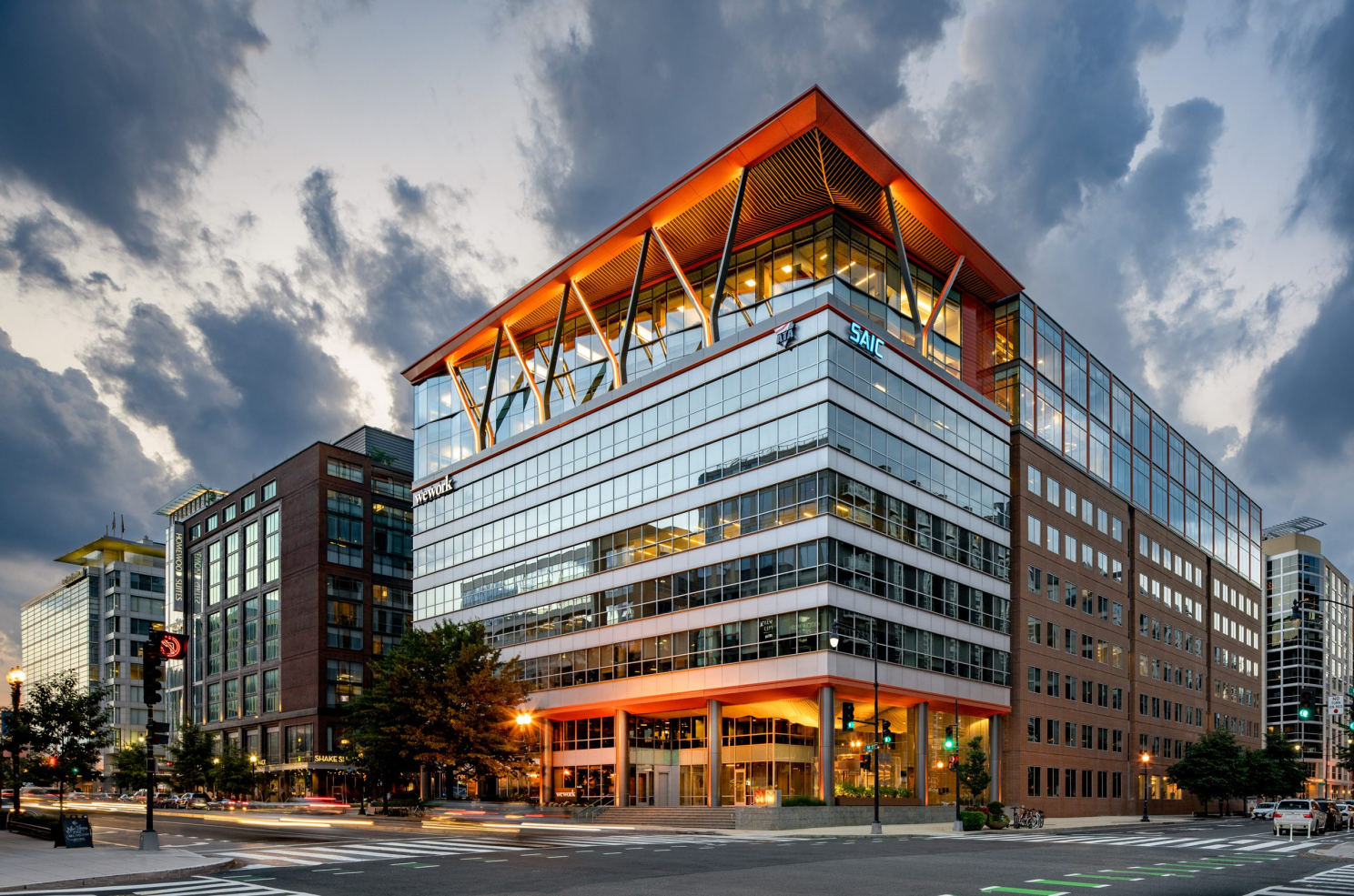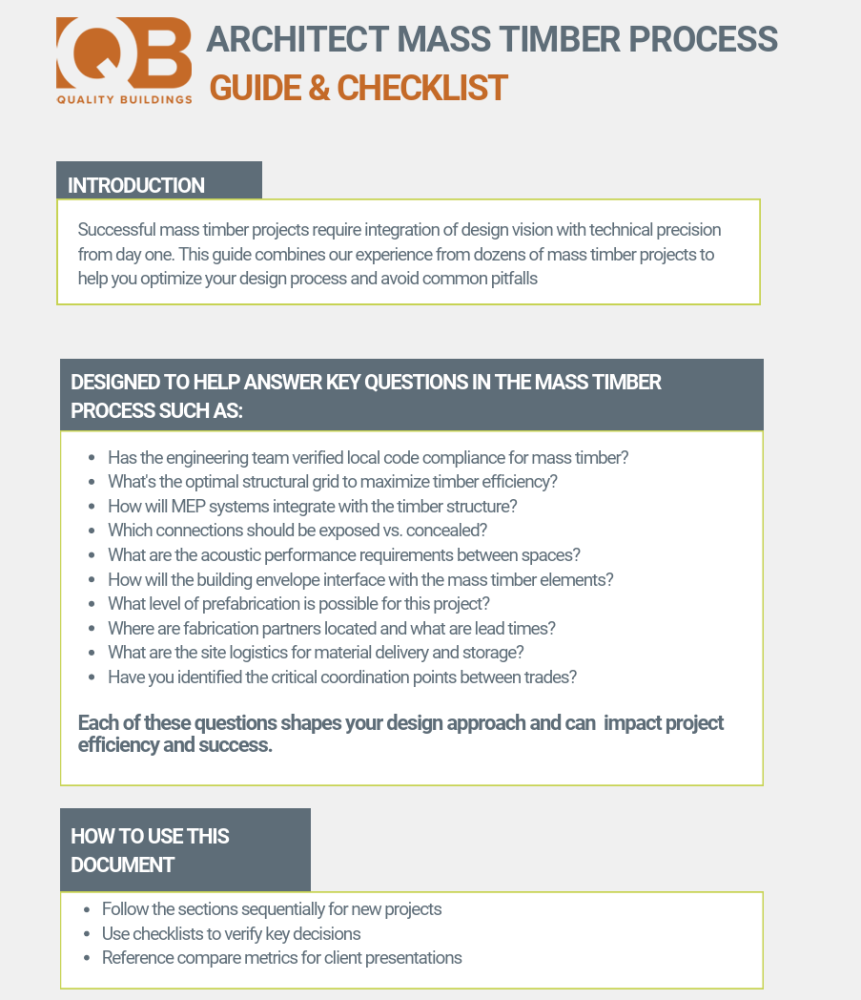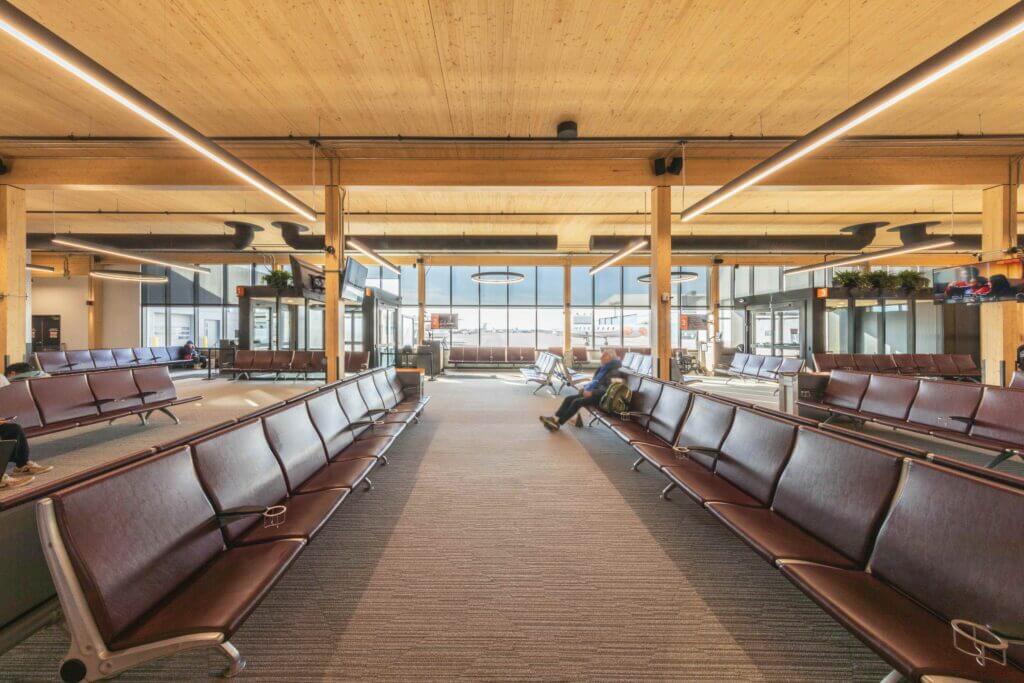Level up your mass timber IQ & stay up-to-date on industry trends

.png)
When developers in Baltimore and Washington D.C. started buying properties that others had written off entirely, they weren't chasing LEED points or carbon credits. They were recognizing something the market had missed: mass timber's structural advantages unlock building opportunities that simply don't exist with concrete and steel. The Baltimore brownfield site sold for 75 cents on the dollar because conventional wisdom said the volatile soils would require prohibitively expensive foundations. The D.C. overbuild project stalled when engineers determined the existing foundation couldn't support additional concrete floors.
Both projects moved forward profitably with mass timber—not because wood was greener, but because it was lighter, faster, and opened revenue streams that heavier materials had made impossible. The real advantage isn't environmental; it's economic strategy disguised as construction methodology. When a third floor adds ten apartments at $2,000 monthly rent, or when a land becomes viable at a 25% discount, the carbon story becomes secondary to the cash flow story that actually drives development decisions.
💡 This article draws from our upcoming Mass Timber Group Show interview with Scott Charney, the Mass Timber Market Manager with Quality Buildings LLC here.

A single design shift turned a neglected parcel into a viable project, revealing a crucial yet often ignored benefit of timber construction.
Scott Charney from Quality Buildings has seen this dynamic repeatedly, from Baltimore to Washington D.C.
"A lot of developers took a pass on this property because they assumed any new building would require a robust foundation to counter the volatile soils," he says. "This particular developer realized mass timber was a lighter system. So he bought the land at 75 cents on the dollar."
The 80M project in Washington D.C. follows the same logic: the existing building's foundation couldn't support extra stories in concrete and steel. Instead, mass timber unlocked an additional revenue source that was otherwise unattainable. "If that third story adds 10 more leasable units $2,000 a month, it's a solid return," Charney notes.

Mass timber doesn't just reduce foundation costs—it enables entirely new deals and site possibilities others can't match.
It's not about trimming expenses by a few percentage points; it's about entering markets—and properties previously deemed too risky or costly.
These overlooked sites are just the beginning. The next crucial factor is the workforce itself, where mass timber is quietly reshaping the cost and speed equation.
Observers rarely expect four people to hoist enormous wood beams and complete floors in days, but they quickly learn there's more to it than headcount.
Moseley Architects, new to mass timber, watched Quality Buildings' crew work with fascination.
"They were amazed at how four of our people could maneuver large glulam timbers and make swift progress, instead of seeing 30 people with nail guns and 2x4s," Charney recalls.

Construction managers at Princeton had a similar experience: "They'd step out for lunch and come back to find a floor's worth of progress already done."
But lower labor numbers are only the start:
The tight crew structure creates a management multiplier effect that slashes complexity across every phase of the build.
However, speed loses its impact if other trades or site conditions can't keep up—leading directly into the toughest scheduling hurdle mass timber faces.
Lightning-fast assembly can stall if the rest of the site operationally lags, introducing a bottleneck that negates mass timber's time advantage.
"You can talk about speed all day," Charney points out. "But if you show up to the site and it isn't moving fast, or if a concrete delivery jams the alley for an hour, mass timber doesn't seem so quick."

The usual suspects—delayed delivery trucks, slower-than-forecasted subcontractors, or poor logistics—can undo even the best-intentioned schedules.
Quality Buildings recommends countering these pitfalls with exhaustive pre-planning.
"We try to identify these risks in early collaboration meetings," Charney notes. "We ask: 'What do we do if our materials arrive early? How do we keep the jobsite free? Where do we offload? How do we handle traffic?'"
The Pennsylvania State Police Academy project underscored both the challenges and the upshot. High winds initially halted panel installation, yet once the wind died down, "We moved so quickly the GC called and asked us to slow down, because the steel contractor couldn't catch up."

Mass timber's speed advantage hinges on tight coordination, but when it's orchestrated well, it can accelerate every other trade's work by delivering completed surfaces weeks ahead of conventional methods.
Beyond scheduling wins, mass timber offers intangible perks—from quieter job sites to a natural aesthetic—that can yield tangible market rewards.
You won't hear armies of nail guns or see piles of debris on these builds, and that difference has a real business impact.
At the 80M project, the developer allayed neighborhood concerns about noise, dust, and endless truck traffic by explaining a different reality:
"We'll have three or four people on screw guns. You won't hear 30 hammers at once. We'll be done stacking floors in weeks, not months," he told community members.
In the end, construction finished faster with minimal disruption.
In another case, tenants stayed put during building upgrades because mass timber work doesn't generate the typical dust clouds or ear-splitting din, eliminating relocation costs and preserving rental revenue. "The only trash was the wrapping when it arrived on the flatbed," one GC commented. "We didn't haul debris away and didn't clutter the site for our own team."
A final surprise is the lasting occupant response. Charney often asks people working in mass timber environments about their impressions: "They say they feel more at ease or can't explain it but know it's a healthier atmosphere."

These "soft" advantages become bottom-line gains—for faster approvals, higher rents, and better tenant retention—once owners see the data.
With results like these, it's no wonder developers are lining up.
Developers across the country are racing to adopt this method, driven by returns that overshadow old assumptions about wood construction.
Quality Buildings is fielding an unprecedented volume of projects:
"We're involved in everything from airports to train stations, plus a ton of university work," Charney reports.
Demand has grown so much they've brought on multiple in-house engineers, ramped up their design support, and expanded marketing to manage the influx of inquiries.
The Hines T3 building in Denver signals this surge in popularity. Excel Energy, a major regional utility, leased the entire six-story, quarter-million-square-foot structure before completion and even broke a prior lease to move in early. "I've never heard of a tenant paying for two leases just to occupy a building sooner," Charney says. Meanwhile, in Baltimore, the original developer and civil engineering firm ended up sharing space with a competing developer who relocated after seeing how effortlessly the structure went up.
Mass timber has shifted from niche status to widespread adoption, driven by teams who see its practical solutions to land constraints, labor shortages, and project risks—well beyond its green credentials.
Ultimately, this isn't just about carbon footprints or sustainability reports. It's about a building method so versatile it transforms the economics of sites once deemed too expensive to develop, synchronizes construction timelines once thought impossible, and reshapes the experience for everyone inside. What began with a brownfield property in Baltimore has become an industry-wide recalibration of how—and why—we build.


Lead mass timber projects with confidence — and leave delays, redesigns, and budget blowups behind.
✅ Solve early-stage design, sourcing, insurance, permitting, code & cost hurdles before they derail your project.
✅ Find technical answers on design, detailing, procurement, embodied carbon ROI, hybrid systems & more.
✅ Build relationships with developers, GCs, architects, and engineers shaping mass timber’s future.
Get your ticket— and get the insights, skills, and network to deliver mass timber projects successfully.



.jpg)
